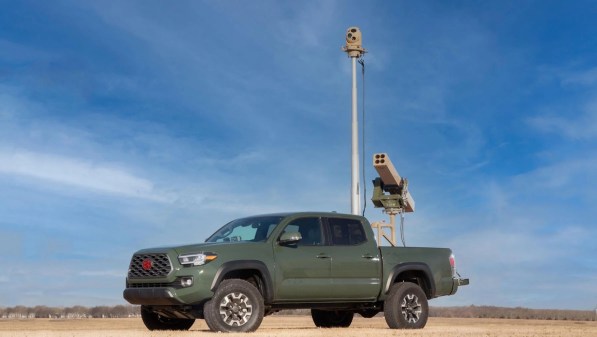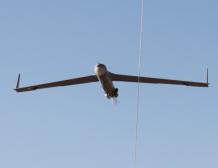American kamikazes: Pentagon has big plans for suicide drones
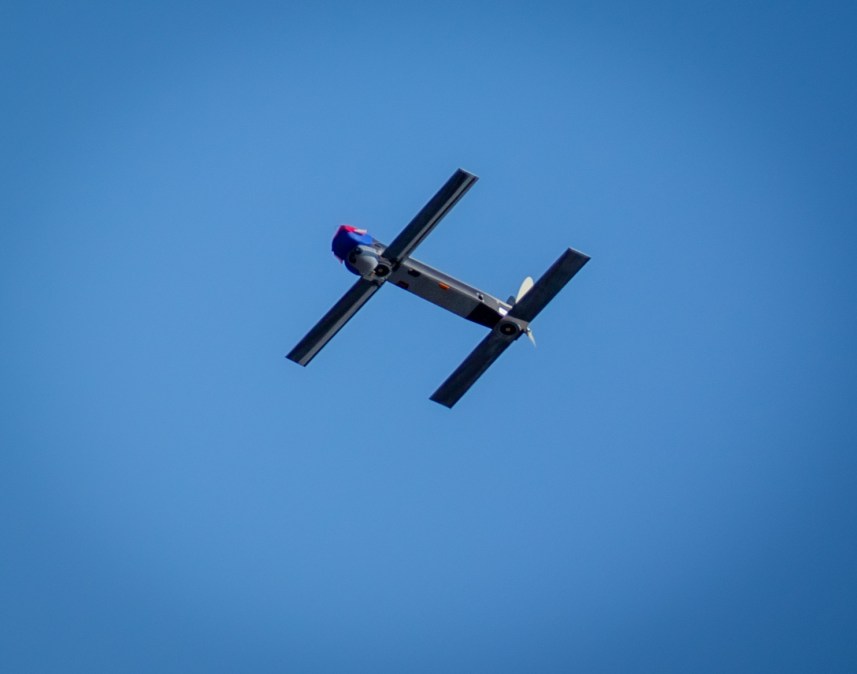
Multiple branches of the U.S. military are eager to add more loitering munitions to their arsenals. The weapons will give them new tools, but the technology also poses a threat to American forces that must be countered, experts say.
These types of systems, sometimes referred to as kamikaze drones or suicide drones, are different than traditional munitions because of their ability to loiter and search for targets to strike.
They are also different than the large unmanned aerial vehicles (UAVs) that gained fame during the post-9/11 wars such as the MQ-9 Reaper. The latter uses sensors onboard the aircraft to find targets and then launches missiles to attack them. By contrast, loitering munitions — often armed with warheads — are designed to go on one-way missions. When they find a target, they intentionally crash into it to destroy it. They can, however, potentially be recalled if no suitable targets are found.
Suicide drones have made headlines recently, as the Department of Defense sends hundreds of them to Ukraine for use against Russian invaders.
The tube-launched, remotely controlled Switchblade 300 system weighs just 5.5 pounds and can fit inside a soldier’s rucksack. It has a range of 10 kilometers, 15 minutes endurance, and a maximum speed of 100 mph, and is armed with a warhead, according to manufacturer AeroVironment.
The larger Switchblade 600 weighs 120 pounds, has a 40-plus kilometer range, 40-plus minutes endurance, and a maximum speed of 120 mph.
Meanwhile, officials across the DOD are pursuing new kamikaze drones and looking for innovative ways to employ them.
The Army
“We in acquisition, I think we want to take advantage of the amazing innovations in that area … And loitering munitions, something we already invest in, it’s something we could invest more in as the technology improves,” Douglas Bush, assistant secretary of the Army for acquisition, logistics and technology, told FedScoop in March during a virtual event hosted by Defense News.
That same month, the service evaluated Rafael Advanced Defense Systems’ Spike Firefly — a portable, vertical take-off and landing (VTOL) miniature tactical loitering munition — at the Army Expeditionary Warrior Experiment 2022.
The Israeli contractor’s system is designed for “ground organic precision strike for close combat forces,” according to a Rafael press release. It is equipped with multiple sensors, a seeker, an encrypted data link and a lethal blast fragmentation warhead. As part of the Army assessment, operators fired a live inert munition at a mock enemy sniper position on an upper floor of a structure.
The Army has also released a sources-sought notice to industry for a Switchblade 600, indicating a desire for a system that gives the operator the ability to select predetermined targets using geolocation reference, visually select and identify targets of opportunity, loiter, abort, redirect, arm/disarm, and manually command warhead detonation — and has a modular architecture so it can be hosted by any future approved end-user device or Army common controller.
The service wants the weapon to have the ability to automatically lock on and track a stationary or moving target.
“Once a target is selected by the operator in the terminal phase of engagement, no further operator input shall be required,” the notice said.
The Marines
The Marine Corps is gung-ho about tactical UAVs. Such technologies offer advantages over more traditional fires such as mortars and artillery, which have a predictable ballistic trajectory and rely on prepositioned targeting, Marine Commandant Gen. David Berger told FedScoop earlier this month during remarks at the Modern Day Marine conference.
“The advantage of having all the way down to the squad level a weapon system that can fly, can shoot even maybe out of a mortar tube and loiter for 40-45 minutes, [or] out of a vehicle that can loiter for 90 minutes … is huge, because at the time that you launch that munition either A, you may not have a precise location for the target, or B, it may be moving,” Berger said. “It gives you so much flexibility to engage either targets that are concealed or targets that are moving because of the loiter time.”
The Corps has been experimenting with these types of drones as part of its “campaign of learning” that is informing Berger’s vision for the future known as Force Design 2030. The experimentation has included arming a robotic ship with loitering munitions to demonstrate the “potency” of that kind of capability, Berger said.
The Marines are making significant investments in these types of weapons and plan to buy them in large quantities, officials say.
Berger’s civilian boss, Navy Secretary Carlos Del Toro, is also keen on these capabilities.
“Drone technology that’s evolved in the past 20 years, quite frankly, has been transformational on the battlefield. And it’s exactly the type of technology that we need to embrace in order to win conflicts in the future,” Del Toro told FedScoop at Modern Day Marine.
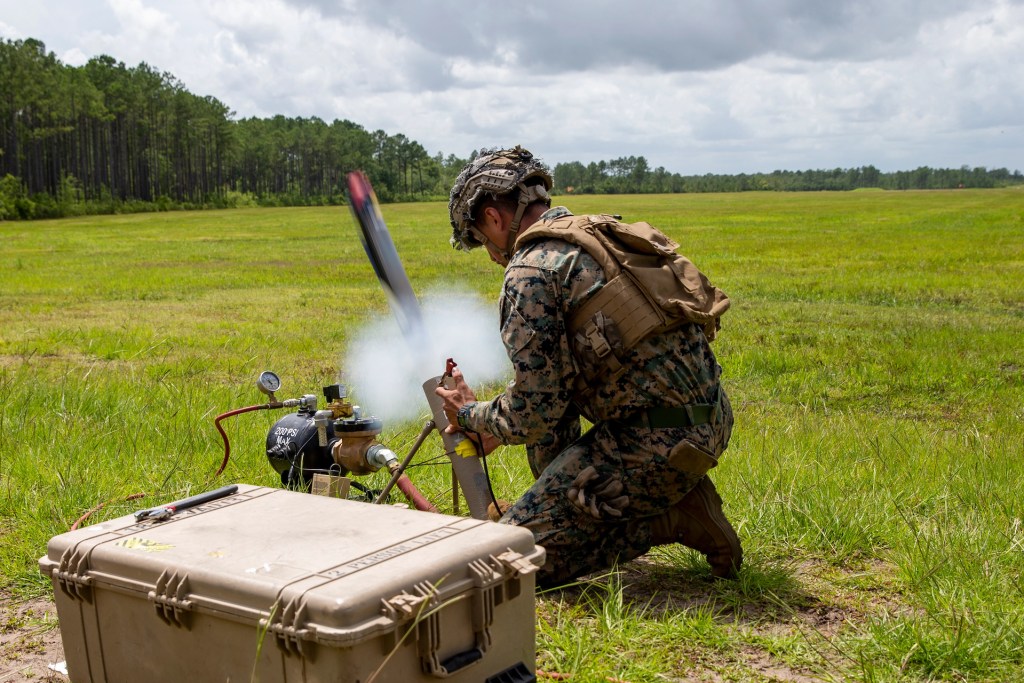
The Air Force
The Air Force has been secretly working on new suicide drones. In April, the Pentagon publicly revealed the existence of a Phoenix Ghost UAV that the U.S. is supplying to Ukraine. The project was overseen by the 645th Aeronautical Systems Group, also known as Big Safari, in collaboration with AEVEX Aerospace.
“The Air Force was working on this and, in discussions with the Ukrainians again about their requirements, we believed that this particular system would very nicely suit their needs,” Pentagon Press Secretary John Kirby told reporters.
In addition to strike missions, the drones could also provide intelligence, surveillance and reconnaissance (ISR) capabilities.
Like most UAVs, the system has optics so “it can also be used to give you a sight picture of what it’s seeing, of course, but its principal focus is attack,” Kirby said.
Although the Phoenix Ghost can perform similar missions as the Switchblade, it does have different capabilities, according to Kirby. He declined to say specifically how the new system is different or provide more details about its characteristics. Images of the weapon have not been publicly released.
Undersecretary of Defense for Acquisition and Sustainment William LaPlante told FedScoop during a press briefing that the Pentagon may use an indefinite-delivery, indefinite-quantity (IDIQ) contract mechanism that will make it easier to buy additional Phoenix Ghost systems.

Special Operations Forces
Special Operations Command is preparing to integrate loitering munitions into its combatant craft vessels for Navy SEALs.
“We’re entering that loitering munition space, which is a very exciting space for a lot of forces out there, including our international partners, and we’re looking for that maritime solution,” a SOCOM program officer said earlier this month at the SOFIC conference. The official was not allowed to be named in press reports under conference ground rules.
Another SOCOM program officer said: “Imagine a whole bunch of Navy SEALs about to attack a beachhead and they send a precision strike instrument off a maritime vessel, and it gets out there and they can see the enemy and kill the enemy before they hit that beachhead. That’s what we’re talking about for precision strike. And there’s a ground portion of it as well. And there’s even an aviation portion of precision strike that we’re all going after this time.”

‘Game-changing’
Caitlin Lee, head of the Mitchell Institute’s Center for Unmanned Aerial Vehicles and Autonomy Studies, said loitering munitions are “game-changing.”
Like large combat UAVs such as the Reaper, they can “stalk targets until they pop up and emerge” and “close kill chains in ways that you really couldn’t before,” she said
However, loitering munitions are generally smaller, more portable, and don’t require recovery systems like runways because they go on one-way missions.
“If you’re in a contested environment where you’re trying to maintain a low profile and a small footprint, it’s always going to be helpful to have smaller munitions, smaller UAVs,” she said.
Kamikaze drones like the Switchblade also cost as little as a few thousand dollars, whereas Reapers have a unit cost exceeding $50 million.
Because of their small size and expendability, loitering munitions could be deployed in large numbers to overwhelm an enemy, Lee noted.
However, many of them would have greater range limitations than larger UAVs, which could be a drawback when the U.S. military is operating across vast distances in regions such as the Indo-Pacific.
“There is a very serious range consideration in the Indo-Pacific, but I do think that with a little bit of creativity and innovation, some of those issues can be overcome,” Lee said.
One potential solution would be to air-launch them.
“Think about putting these loitering munitions on stealth aircraft that can get inside the threat [area] and then release them,” she said. “You can launch lots of these relatively small munitions from a large airframe, and so you have a potential cost imposition strategy where you can kind of overwhelm the target” and enemy air defenses.
The Navy could also employ its most advanced sea-launched Tomahawk cruise missiles, which have loitering capability and a range of 900 nautical miles, although they come with a hefty price tag of more than $1 million apiece.
Going forward, a key consideration is the extent to which new kamikaze drones will be autonomous.
Many of today’s systems, such as the Switchblade, are remotely operated. But an autonomous tactical UAV could be preprogrammed before flight and “launched into a kill box where it basically can shoot any pre-approved target,” Lee said.
Some officials, like Berger, see autonomy as the wave of the future.
Autonomous drones would offer advantages, such as being able to operate better in contested environments where data links aren’t assured, Lee noted.
However, things could also go horribly wrong.
“If that autonomous system were to lock on a target that was the wrong target … that could be very problematic, and it can also even risk escalation. So, there’s a major downside to going fully autonomous with loitering munitions,” Lee said. “On the other hand, it does provide a way to rapidly prosecute targets in a communication degraded or denied environment.”
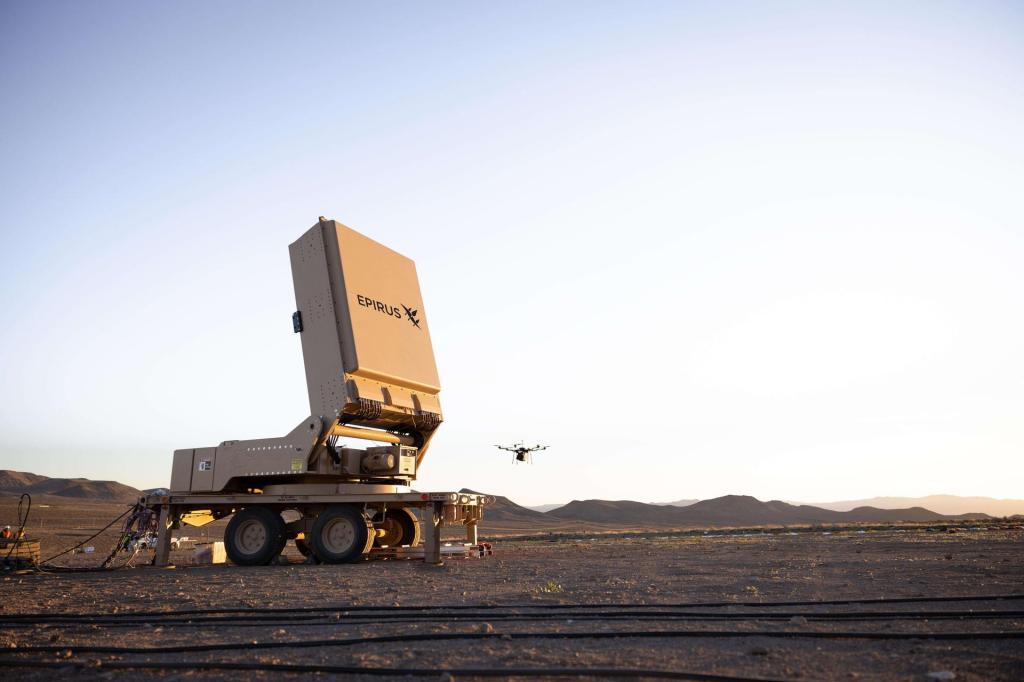
‘An interesting defense problem’
Loitering munitions aren’t just an offensive tool for the Pentagon — U.S. forces must also be able to protect themselves against kamikaze drones developed by China, Russia, or other adversaries.
The weapons occupy “an interesting little spot” in the threat spectrum, said Tom Karako, an air-and-missile defense expert at the Center for Strategic and International Studies. They’re not traditional cruise missiles — which are bigger and faster — or typical UAVs, which aren’t designed for suicide attacks.
“They can take the time and wait for the right moments [to strike]. And it’s an interesting defense problem, right, because … they’re small and they don’t go that fast. And sometimes it’s harder to kill something that’s going slow than it is to kill something that’s going a little faster. The low-and-slow problem … can be pretty challenging,” he said.
Low-altitude, low-speed threats are a thorny problem because they can be tough to identify — a key step in the kill chain before an adversary’s systems can be targeted, he noted.
“It’s not just about the hitting. It’s about the detection and the classification,” he explained. “It’s the command and control to know that, oh, that’s a drone and not a bird or something like that. It’s the ability to find it and to identify it as a threat.”
The Switchblade 300, for example, is touted by AeroVironment as having “very low” visual, thermal and acoustic signatures, and an operating altitude below 500 feet.
The counter-UAS challenge “is getting increasing attention within the air defense community,” Karako said. “I expect we’ll probably see a bit more of that discussion in the coming months when we get the Missile Defense Review, but also as the Army and the department begin to move out on some of the recommendations of the JCO,” he added, referring to the Joint Counter-small Unmanned Aerial Systems Office.
“We do have some really good counter-UAS stuff, and there’s a demand signal for a ton more,” Karako said.
Directed energy weapons are seen as a promising tool for taking out enemy drones.
“At the end of the day, it’s always gonna be a mix of kinetic and non-kinetic [solutions]. But yeah, I think direct energy — not just lasers, but also high-powered microwaves and other forms of directed energy — I think are definitely gonna have an important role,” Karako said.
The JCO in April hosted a technology demonstration at Yuma Proving Ground, Arizona, of high-powered microwave systems. The office describes the technology as “a solution utilizing focused electromagnetic pulses from a fixed ground location at range with energy sufficient to destroy or defeat sUAS over the air.”
Additional demonstration events for technologies designed to counter small drones will be conducted semi-annually as the JCO coordinates with DOD partners to identify focus areas providing the most impact for transitioning solutions. The next demonstration is slated for September and will be informed by what’s happening in Ukraine, officials say. The event is still being planned and additional details are expected to be released this summer.
“For future tests, we’ll have to work with the threat community on additional … loitering or one-way attack scenarios,” James Childress, deputy division chief with the JCO’s acquisition and resources division, told FedScoop earlier this month during a media teleconference.
